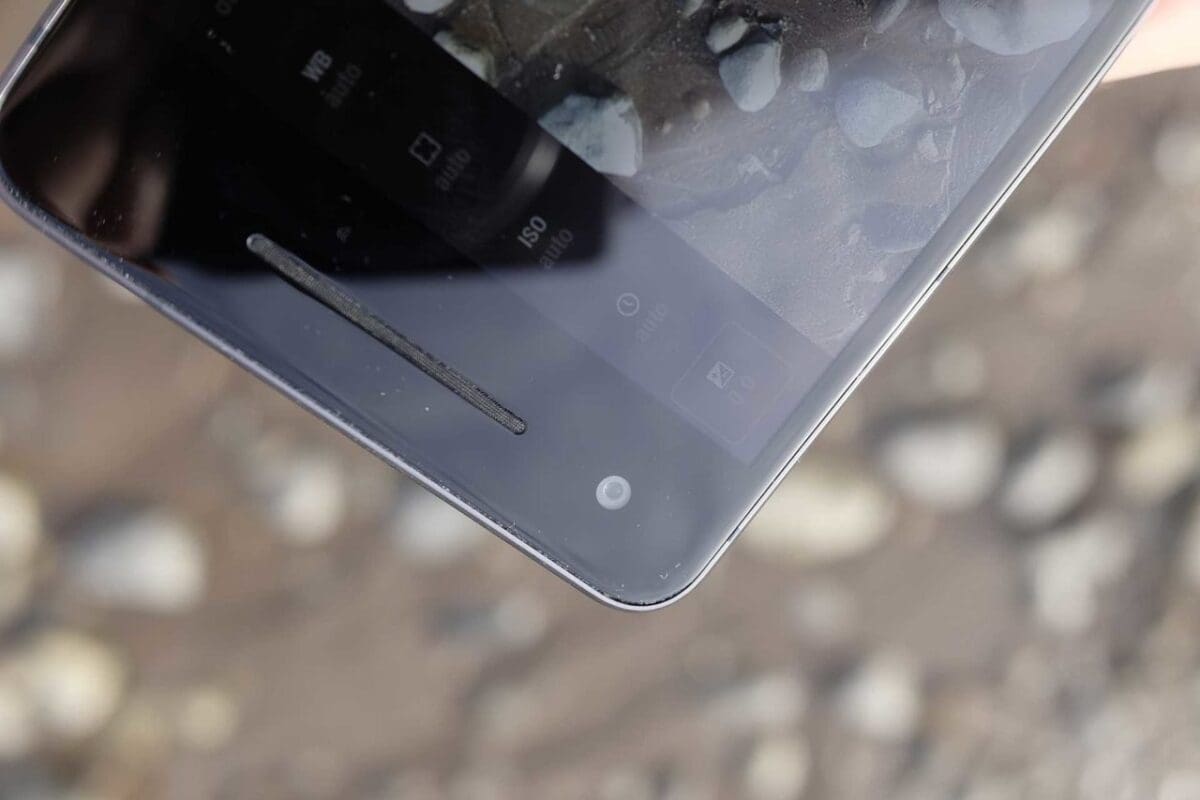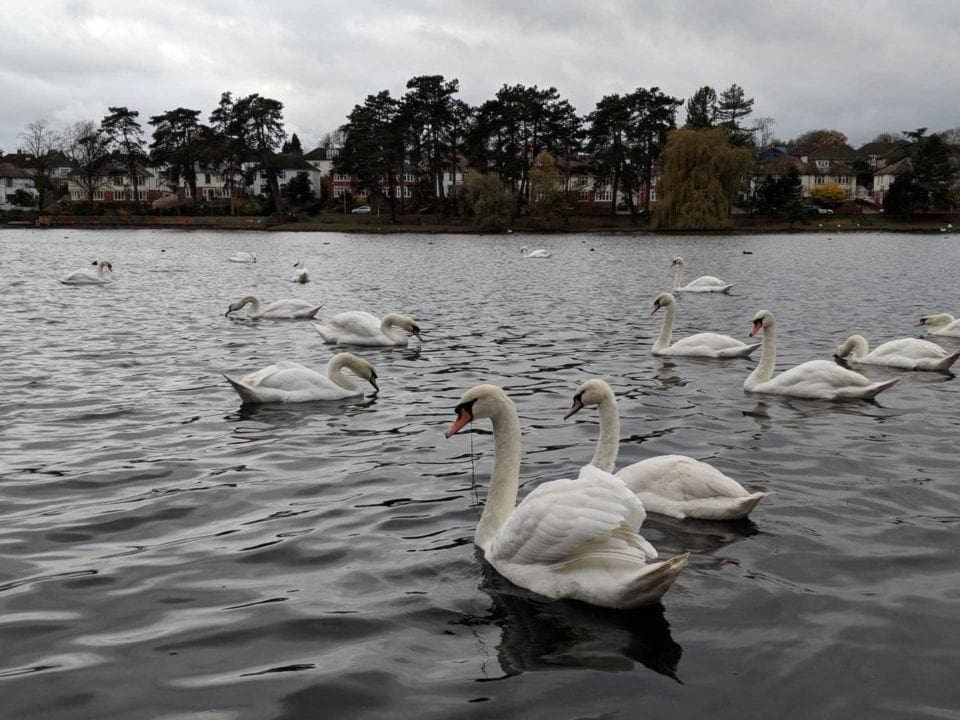What is the Google Pixel 2?
The second generation of Google’s popular “Pixel” phone has seen some improvements made specifically to the on-board camera.
It uses a single camera setup on the back – there’s a 12.2 megapixel sensor, coupled with an f/1.8 aperture lens. The front facing camera is an 8 megapixel device, with an f/2.4 aperture lens.
There are two sizes available – the Pixel 2 and the Pixel 2 XL. Unlike with the iPhone 8 / 8 Plus, there is no difference in the cameras in either device, so image quality should be equal. We have been using a Pixel 2 device for this review.
Whichever model you go for, you can choose between 64GB and 128GB inbuilt storage. There’s no way to expand the physical memory of the phone, but customers can enjoy unlimited cloud storage for their photos and videos until 2020.
Video recording is available up to 4K, but unlike the iPhone X, the frame rate tops out at 30fps (as opposed to 60fps).

Build Quality and Handling
Weighing in at just 143g and featuring a very simple design, the Pixel 2 has quite a sleek appearance. The back is matte which has the advantage of not attracting fingerprints. The Pixel 2 XL is of course heavier, but you get rewarded with a higher resolution and larger screen – something which may be appealing to anyone with a keen interest in taking photos.
The native camera app can be accessed by swiping up from the bottom right hand corner of the lock screen. Disappointingly, the Pixel 2’s native app isn’t as well featured as the one you’ll find on the Huawei Mate 10 Pro – there’s no “professional” or “advanced” mode here, which seems a little strange for something that is so keenly targeted towards photographers.
Oddly, you can change the white balance setting, though. Furthermore, there’s also no raw format shooting from the native app either.
You can take a picture either via the on-screen shutter button, or by using the physical volume key on the side of the phone. Hold down either of those and you can take a burst of images – the Pixel 2 will automatically decide what it thinks is the best shot from your burst, but you can choose an alternative one if you prefer.

It seems that most modern smartphones offer a way to create a shallow depth of field effect. With the Pixel 2, this is called “Portrait Mode” – although you can use it for other subjects if you want to.
To use the mode, you tap on the subject you want to isolate – the effect isn’t previewed on screen, but once you head to playback, you can see how it has been implemented. You’ll get both a blurred background shot, and a normal shot – the latter is useful if the blur hasn’t been particularly successful but you otherwise like the image.
On the odd occasion, the Pixel 2 seems to decide that the subject wasn’t worthy of a blurred background and doesn’t apply the effect at all.
Unlike other smartphones which offer this effect, the Pixel 2 does this with just a single lens, applying the blur via artificial intelligence (AI). You can also use Portrait Mode when using the front-facing camera to create shallow depth of field effect selfies.
By default, the Pixel 2 shoots in HDR. If you want to switch this off, you’ll need to go to the main settings menu, head under advanced and switch on HDR control.
Image Quality
As it stands, DxO gives the Google Pixel 2 the overall best score for smartphone, but falls just behind the iPhone X when it comes to still image quality.
When the light is good, the Pixel 2 is capable of producing some fantastic images. Colours tend to be a little less vibrant than from the iPhone X – making them closer to reality, but perhaps slightly less appealing on occasion.
Reds in particular seem less vibrant from the Pixel 2. Whether you prefer a punchier image, or a more realistic one, will be down to personal preference. HDR is generally well applied, without looking unrealistic – it’s certainly not a problem to leave in “always on” by default.
Detail reproduction is also very good, with a minimal amount of smudging in good light. The Pixel 2 also does very well as the light drops, producing impressive images when viewing them on a small screen. If you examine low light shots at 100%, more image smoothing is noticeable, but, how often the average phone user is intending to do that is questionable.
The standout feature for me here is the Portrait Mode. Despite the odd quirk when it seems to decide not to apply it, I’ve had great success with it. It works best when photographing something reasonably large in the frame, such as, of course, a portrait.
I’ve also had some good success when shooting more intricate subjects – and while you can see some strange artefacts if you examine very closely, for Instagram and the like, it’s very impressive.
Despite the fact that the Pixel 2 only uses one camera, unlike the iPhone X, with its dual-camera setup, I think the Pixel 2’s results are slightly more natural, and less obviously “artificial”.
Sample Photos





Verdict
It’s easy to see why DxO has rated the Pixel 2 so highly. It is capable of delivering some fantastic images, in both good and low light. The Portrait Mode isn’t without its quirks, but works well to produce impressive blurred background shots – the fact it does this without a second camera is all the more impressive.
I’d really like to see more photographic functionality added to the native camera app to really make it stand out. It may well appeal to beginners, but a pro mode, which could be switched off for those that don’t want it, seems like the obvious solution here.
You can download third party apps which give you access to extensive controls, as well as raw format shooting, but to have it on the easy-to-access native app would be preferable.
Although the Pixel 2 doesn’t need a second camera or lens to produce its shallow depth of field effects, it would be nice to have a telephoto option for those times when you can’t get closer to a subject. It’s for this reason, that the iPhone X just about pips the Pixel 2 to the post of smartphone camera of choice for photographers.
It’s important to consider budget however – while you get a little extra functionality from the iPhone X, you pay a lot more for it. Add on the fact that with the Pixel 2 you get unlimited cloud storage for your photos, for free, and the Pixel 2 is by far the better value proposition.
The top three smartphone cameras at the moment, according to DxO, are the Huawei Mate 10 Pro, Google Pixel 2 and the Apple iPhone X. I’ve had the fortune to use all three in the past month – and they all have different merits.
With the Huawei Mate 10 Pro you can enjoy manual control and raw format shooting, with the iPhone X you get two lenses, and with the Pixel 2, the blurred background effect is the most natural.
Which one would you buy?


